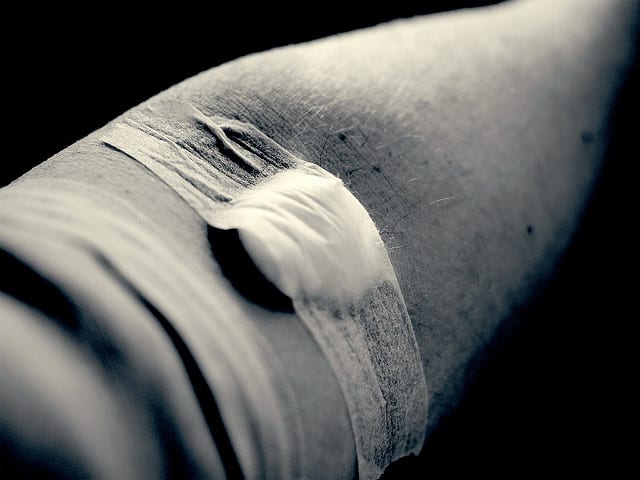“You have cancer.†The dreaded three words that no patient wants to hear when they go into the clinic. A cancer diagnosis can be devastating on an emotional and psychological level, and most importantly, it prematurely reminds us of our mortality. According to 2017 Cancer Statistics, over 1.7 million Americans will be diagnosed with some form of cancer, of which over 600,000 will succumb to the disease.

So what can we do to make the word “cancer†sound less scary? We can remove the looming imminence of mortality that it brings by early detection. For the most commonly diagnosed cancers, such as breast, prostate and lung cancer, patients are diagnosed on average at Stage I or II, which are considered fairly early diagnoses. For breast and prostate cancer, a stage I or II tumor does not indicate a bad prognosis, but for lung cancer, the 5-year survival for a patient with stage II disease is approximately 26%. Whereas, stage I results in double the chance of 5-year survival at 54%. While we could look at the statistics-based prognosis as a glass half empty or glass half full scenario, most patients tend to hold on to any shred of hope that they are one of the lucky ones to beat the disease.
Cancer is simply an accumulation of potentially harmful mutations, or changes in DNA, combined with a high degree of inflammation that supports cancer cell survival by providing cells with an environment that makes it easier for them to divide. Therefore, studying the mutations that drive cancer growth, also known as drivers, can help shed light on the presence of the tumor as well as what it requires to survive. The same mutations can also be used as biomarkers to detect the presence of the tumor early. The only widely available and utilized blood test to detect cancer currently is the prostate specific antigen (PSA) test, however the jury is still out on whether this is a reliable predictor of staging or prognosis.
Seeking out tools to detect cancer early
New technologies to detect cancers early are rapidly developing and are at the forefront of emerging research. For example, my thesis project studies how small RNAs, namely microRNAs, can be used as early biomarkers of developing disease through a simple blood sample collection. MicroRNAs themselves don't code for proteins, but are able to bind onto and suppress expression of genes that cause cancer, namely oncogenes, within the cell before those genes are converted to proteins.
Our lab has found that several microRNAs had increased expression as our mouse model developed tumors, making it a strong potential tool to detect emerging disease. However, microRNAs are only one of the many biomarker types available for early detection in many cancer types, and scientists have recently found that investigating DNA or mRNA that subsequently code for proteins involved in tumor growth can also be incredibly powerful tools for this purpose.

A study published in Science this January introduced a new tool named CancerSEEK that had over 99% accuracy in detecting patients with any of the 8 most common cancers including those originating from breast, lung, ovary and pancreas – all deadly at later stages of diagnoses. The test itself consists of a simple blood draw. Then, scientists use the blood sample to look at the expression of 8 proteins and check over 2,000 hotspots in our genes where mutations can occur that result in cancer drivers.
Over 1,000 patients were surveyed in this study with a range of cancers subtypes in stages I-III. The study identified over 70% of tumors, with an impressive 98% detection accuracy in ovarian cancer. Although the test is currently expected to be priced at ~$500 per patient, researchers believe this is a crucial first step in developing a large scale test for early detection that only requires a simple blood draw.
While the test covers the cancer types that make up 60% of annual diagnoses, critics of CancerSEEK believe that the low detection rate of 40% in the earliest stages of symptomless cancers is disappointing. While the test is able to detect the presence of tumors in the body, it is unable to identify the origin of the tumors meaning patients still having to undergo biopsies and scans to determine where the cancer originated.
Regardless, the promise of a test as simple as a blood-draw analysis may have paved the way for newer, more innovative technologies to make early detection easier and more accurate in the future. As a cancer researcher myself, I strive for the day where patients who hear “you have cancer†walk out of the clinic with more hope than dread in their hearts.
About the Author
 Sudeepti Kuppa is a Ph.D. candidate in the College of Pharmacy, and studies how to develop miRNAs into early detection biomarkers for clinically challenging gynecological cancers such as ovarian or metastatic breast cancer. She also got her undergraduate at UGA so she's a double-Dawg and hasn't regretted staying in Athens for a moment! When she's not in the lab discovering cool new things about cancer, Sudeepti likes to meditate, go to the gym and make sure she gets a healthy dose of TV shows and her pet rabbit Fessy (who's basically a dog)! Follow Sudeepti on Instagram and Twitter at @kuppatrupa. More from Sudeepti Kuppa. |
About the Author
- athenssciencecafehttps://athensscienceobserver.com/author/athenssciencecafe/April 17, 2020
- athenssciencecafehttps://athensscienceobserver.com/author/athenssciencecafe/April 12, 2020
- athenssciencecafehttps://athensscienceobserver.com/author/athenssciencecafe/April 3, 2020
- athenssciencecafehttps://athensscienceobserver.com/author/athenssciencecafe/March 30, 2020







